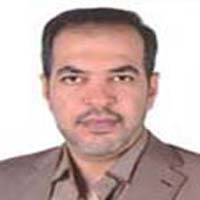Analysis of the Social Network of Co-Authorship of Internal Articles of Faculty Members in the Field of Educational Sciences of Governmental Universities in Tehran
In this research, the way of scientific cooperation among professors of educational sciences among scientific groups is investigated and it is clear how knowledge is transferred in scientific cooperation networks between them and what is the contribution of each of them in the production of scientific articles published in the country. The present study was conducted to study the Co-authorship network of faculty members in the field of education of Governmental universities of Tehran and review authorship patterns in 2795 published articles in scientific journals.
This study was conducted scientometric approach and social network analysis method. The statistical population of the research includes the internally published articles of the faculty members of educational sciences of Tehran universities, which were published by scientific research journals and periodicals and uploaded to the citation indexes of the sciences of the Islamic world science center and Magiran. 2795 articles that were indexed in these databases from 1377 to 1395 were examined with the available sample method. Since in the sample selection process, it was not possible to access all the articles of faculty members, and as a result, it was not possible to select samples using random methods, therefore, the available sample method was used to select the samples. The number of co-authors for each member was entered in a table in Excel software. The matrix was created manually. The result was a 106*106 matrix. Configure the Co-authorship network for the publication of internal papers was investigated using the macro indicators network analysis such as Density, clustering coefficient, mean distance, connectedness, and diameter of the network and for analyzing the performance of each faculty member with a compilation in the network, was used the micro indexes of the analysis of networks such as Indices degree centrality, betweenness, closeness, and eigenvector. To analyze and draw information obtained from the network were used U.C.I.Net software and its complementary package Net Drew.
The pattern of three authorships has been the most important collaborative pattern in the articles studied (%30). The network is composed of 106 nodes and 461 ties. The study of micro indicators showed that individuals such as Ali Delavar, Mahmoud Mehrmohammadi, Abbas Abbaspour, Mahboobeh Arefi, and Khosrow Bagheri with the highest degree of scientific collaboration with other writers, are the most participant in the network. Based on the analysis of the network structure in terms of micro-indices that indicate the individual's performance in the network, it can be said that according to the degree centrality index, people such as Mahmoud Mehrmohammadi, Korosh Fathi Vajargah, Mohammad Attaran, and Khosro Bagheri have a prominent position and influence And their power in the network is higher than other members and they have the most scientific influence and these people somehow control the flow of information in the network. The analysis of macro indicators also showed that the density of the mentioned network was 0.114, so the network did not have sufficient Cohesion. Therefore, the current network is of a discrete type and the flow of information is slow. In other words, the connection between the nodes is low and the network has low coherence and there are many holes in it.
Examining the writing patterns of the professors showed that the pattern of three writings in the published internal articles took the largest share, which was the result of the cooperation of the professors with students and other researchers rather than the cooperation of the professors with each other; Also, the examination of micro and macro indicators also showed that the scientific cooperation of professors in the field of educational sciences in the public universities of Tehran is not favorable.
- حق عضویت دریافتی صرف حمایت از نشریات عضو و نگهداری، تکمیل و توسعه مگیران میشود.
- پرداخت حق اشتراک و دانلود مقالات اجازه بازنشر آن در سایر رسانههای چاپی و دیجیتال را به کاربر نمیدهد.


